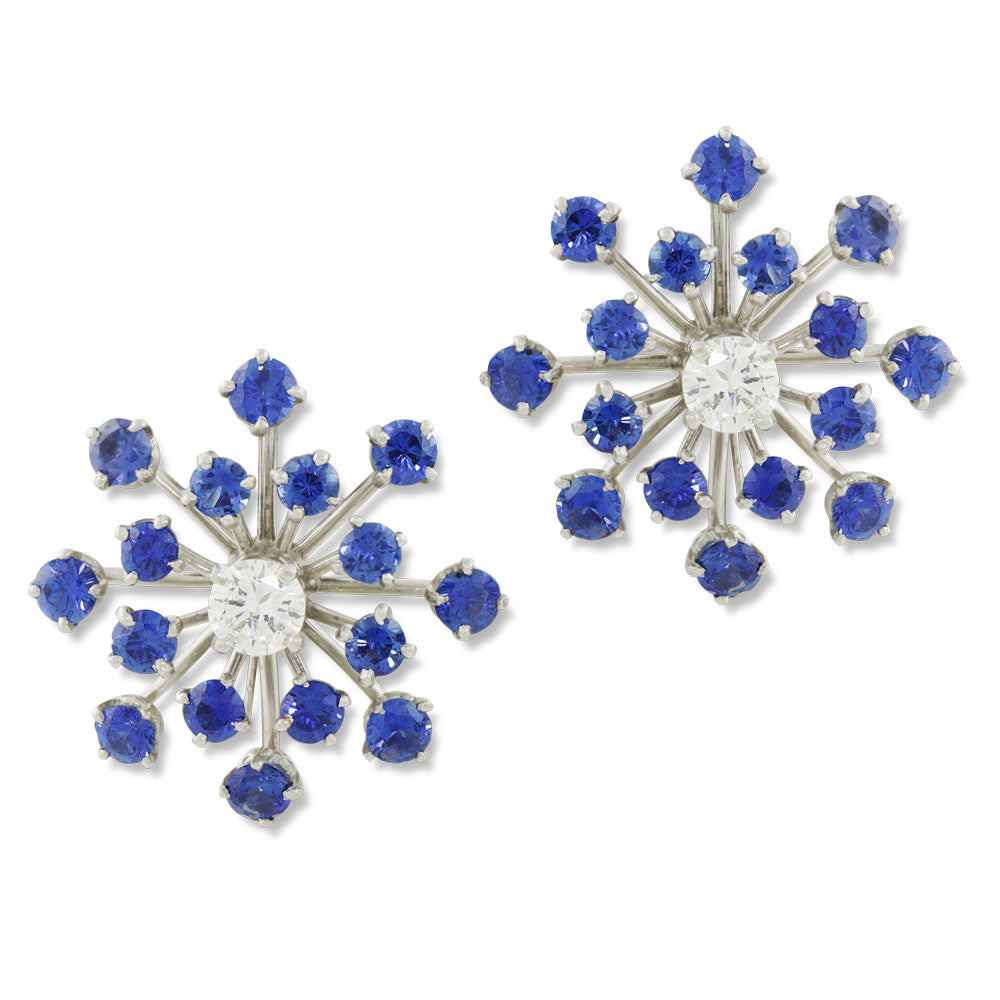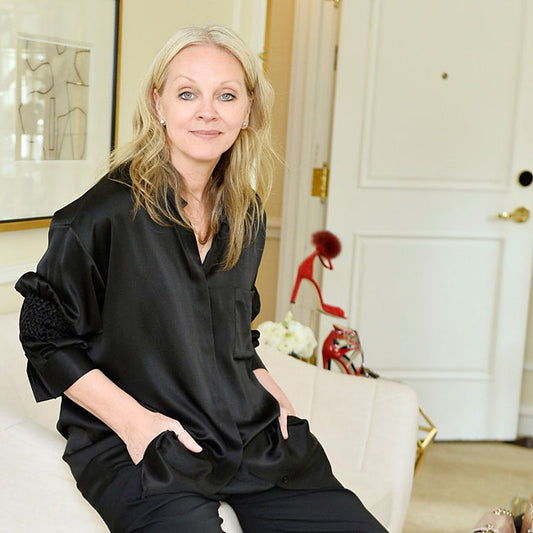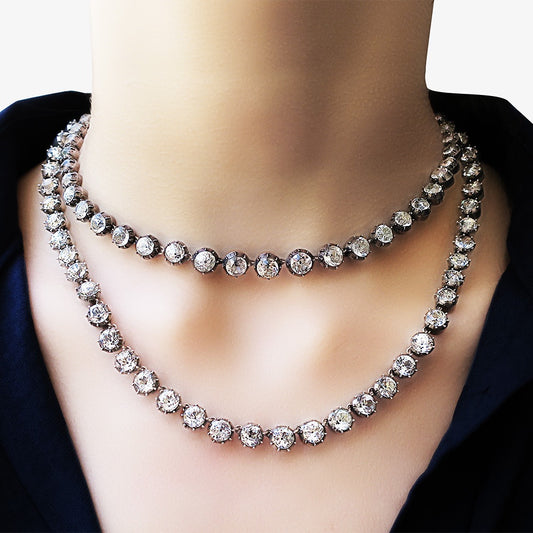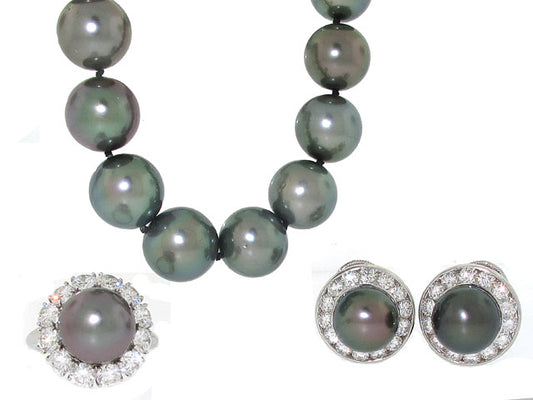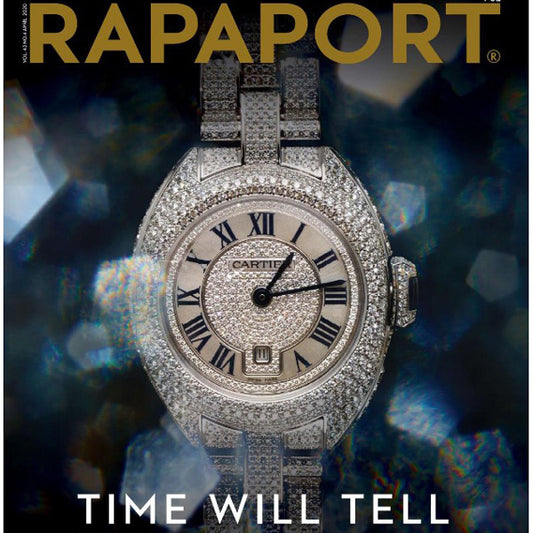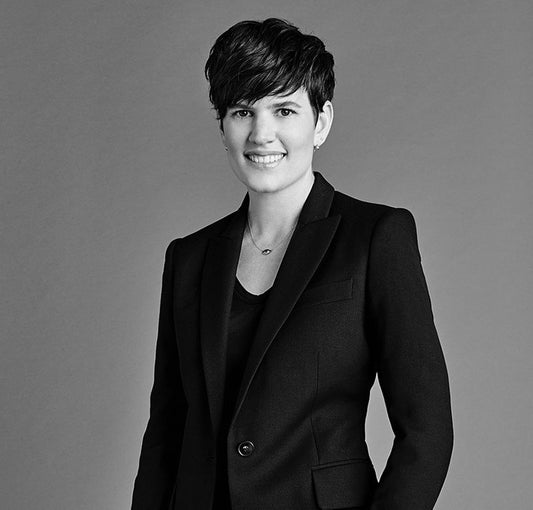The design period known as the Mid-Century ranged from about 1950-1965. The years following World War II were a welcome return to prosperity and led to a demand in luxurious jewelry to match the increasingly feminine styles of the time. In the era when men wore structured, dark hued suits tailored to perfection, beautiful women were bedecked in nipped-waist suits, swing cloaks, a-line skirts and daring décolletage.
The designs of Mid-Century jewelry changed as well from the masculine, military styles of the ’40s to a more elegant, feminine look. Jewelry designers began creating stunning confections of glistening diamonds, or bold, modern looks with gemstones. The linear styles of the previous decade gave way to voluptuous curves, as in the pearls so popular in that era, or whimsical portrayals of animals, flowers, branches, and vines. Signed designer jewelry from such notable brands as Tiffany & Co., Cartier and Van Cleef & Arpels became popularized through the mediums of film and magazines, especially in such movies as the classic “Breakfast at Tiffany’s.” A concurrent Modernist movement introduced abstract high-end designs such as the starburst, anemone, or cluster motifs.


The bright, quirky style of famous actress and singer, Doris Day, America’s sweetheart, is reflected in the vibrant colors used by some Mid-Century jewelry designers such as Cartier, Tiffany and Company, and Boucheron. It is easy to imagine the perky blonde in the brightly colored gemstone jewelry of the day.


Grace Kelly, the Mid-Century epitome of Hollywood (and real-life) royalty, exuded timeless, classic elegance. Her sleek blonde hair and feminine fairness was the perfect background for lustrous pearls and glittering diamonds. Her style was fabulously luxurious, yet classy, and so chic that she still stands as a paragon of fashion. The warm tones of Mid-Century yellow gold jewelry, as well as Mid-Century pearl jewelry, complemented Kelly’s glowing skin and gracious demeanor.


Audrey Hepburn, the eternally chic ingénue, was never more dazzling than when decked in diamonds. Her regal, swan-like grace was the perfect counterbalance for the glittering glamour she displays in such films as “My Fair Lady” and “Roman Holiday” as well as in real life. Mid-Century diamond jewelry was delicate, yet daring, set in sleek platinum or shining white gold.
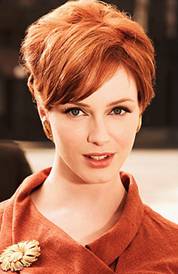

Mid-Century Modernist jewelry has been perfectly portrayed in recent years on the wildly popular television series, “Mad Men.” Large, abstract brooches add interest to any outfit and help incorporate savvy style into polished and professional wardrobes. Mid-Century jewelry designers used sweeping lines, starburst motifs and floral motifs to create highly textured and sculptural ornaments which were in keeping with the Modernist movements of the day.
Post-War Prosperity and a Return to Luxury
The years following the end of World War II saw a marked increase in prosperity and a corresponding rise in the demand for more luxurious jewelry by designers such as Van Cleef & Arpels, Harry Winston and Oscar Heyman. The bold, masculine lines of wartime fashions transitioned into more feminine styles with sweeping skirts and necklines highlighting the décolletage, and jewelry designs changed to complement this new look. This was a traditionalist movement in fine jewelry, which again was made with the finest of materials such as platinum and diamonds.
Concurrently a modernist movement also took place during this period, supported by independent studio artists. These artists set up shop throughout the country, producing avant-garde designs, hand-crafted in abstract forms using basic materials used as sterling silver and semi-precious stones. These pieces have become highly collectible.
The jewelry of the 1950s and 1960s differed from earlier styles mainly in terms of the production techniques used. In contrast with the heavy polished look of the Retro period, Mid-Century jewelry was made in gold openwork, highly textured in brushed metal, mesh and braided metal wire. Matching jewelry suites were popular during this era, the necklaces shorter in length, with clip back earrings and flexible gemstone encrusted bracelets. Popular motifs included floral and foliate designs as well as whimsical portrayals of animals and people. Also popular were abstract designs such as the starburst and cluster jewelry.

